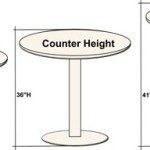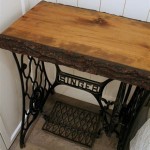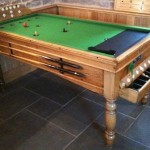Exploring Antique Dining Table Styles: A Timeless Addition to the Home
Antique dining tables represent more than just functional furniture pieces; they are significant historical artifacts, each bearing the marks of craftsmanship, design trends, and social customs of its era. Understanding the defining characteristics of various antique dining table styles allows collectors and enthusiasts to appreciate the rich history they represent and to select pieces that complement their interior design aesthetics. This article explores several prominent styles, highlighting their unique traits and providing context for their enduring appeal.
Georgian Dining Tables (1714-1830)
The Georgian period, spanning the reigns of Kings George I through George IV, witnessed the development of elegant and refined furniture designs. Georgian dining tables are characterized by their classic proportions, high-quality materials, and meticulous craftsmanship. The style often reflects the influence of classical architecture, emphasizing symmetry and balance.
Solid mahogany was the preferred material during this era, prized for its rich color, durability, and ability to be finely carved. Other hardwoods, such as walnut, were also occasionally used, particularly in earlier Georgian pieces. The table legs were typically straight or slightly cabriole (S-shaped) with claw-and-ball feet. Aprons, the decorative panels beneath the tabletop, were often adorned with intricate carvings, such as acanthus leaves, shells, and scrolls. Extendable tables were also developed during this period, utilizing either a draw-leaf mechanism or separate leaves that could be inserted to accommodate larger gatherings. The draw-leaf mechanism, where leaves slide out from beneath the table, was particularly common.
Georgian dining tables often exuded an air of formality and sophistication, reflecting the social customs and entertaining practices of the upper classes. The attention to detail and use of high-quality materials ensure their continued value and desirability among collectors.
Victorian Dining Tables (1837-1901)
The Victorian era, named after Queen Victoria, was a period of immense social and industrial change in Britain and its colonies. This transformation profoundly influenced furniture design, resulting in a diverse range of styles characterized by elaborate ornamentation, eclecticism, and a focus on comfort and functionality.
Victorian dining tables often featured heavy, substantial construction. Mahogany remained a popular choice, but the use of walnut, rosewood, and oak also increased. Table legs were frequently turned and carved, exhibiting elaborate designs such as fluting, reeding, and floral motifs. Bulbous legs and pedestal bases were also common, providing stability to the often large and heavy tabletops. Extension mechanisms became more sophisticated, with crank-operated systems that allowed for easy insertion and removal of leaves. These leaves were usually stored separately, adding to the practicality of hosting larger dinners.
Victorian design embraced ornamentation, and dining tables were often heavily embellished. Carvings, inlays, and veneers added visual interest and reflected the era's fascination with detail. The use of dark, rich wood tones, combined with plush upholstery and elaborate accessories, created a sense of opulence and grandeur in the dining room.
Arts and Crafts Dining Tables (Late 19th Century - Early 20th Century)
The Arts and Crafts movement emerged as a reaction against the mass-produced, often poorly crafted furniture of the Industrial Revolution. This movement emphasized handcrafted, simple design, and the use of natural materials. Arts and Crafts dining tables reflect these principles, prioritizing functionality, durability, and honest construction.
Oak was the most commonly used wood in Arts and Crafts furniture, often finished with a simple stain and varnish to highlight the natural grain. The designs were intentionally straightforward, avoiding elaborate ornamentation. Table legs were typically square or slightly tapered, with minimal carving or detailing. Aprons were often plain, emphasizing the structural integrity of the piece. Extension mechanisms, when present, were typically simple and robust, reflecting the movement's emphasis on practicality.
Arts and Crafts dining tables were valued for their honesty and integrity. The focus was on highlighting the natural beauty of the materials and the skill of the craftsman. The style expressed a rejection of Victorian excess and a return to simpler, more authentic forms of design. These tables remain appreciated for their clean lines, durability, and connection to a significant artistic and social movement.
Art Deco Dining Tables (1920s - 1930s)
The Art Deco movement, flourishing in the 1920s and 1930s, celebrated modernity, technology, and luxury. Art Deco dining tables reflected this spirit, featuring sleek lines, geometric shapes, and the use of exotic materials. The style borrowed influences from various sources, including ancient Egyptian and Mayan art, creating a distinctive and visually striking aesthetic.
A variety of woods were used in Art Deco dining tables, including walnut, mahogany, and ebony. Often, these woods were combined with other materials, such as chrome, glass, and exotic veneers. Table legs were frequently streamlined and geometric, sometimes featuring stepped designs or stylized animal motifs. Tabletops were often rectangular or oval, with rounded edges. Extension mechanisms were typically discreet, maintaining the clean lines of the design.
Art Deco design emphasized glamour and sophistication. Tables might incorporate mirrored surfaces, inlaid details, and highly polished finishes. Color palettes ranged from rich, dark tones to lighter, more vibrant shades. The overall effect was one of elegance and modernity, reflecting the optimism and energy of the interwar period. Art Deco dining tables continue to be admired for their unique blend of style, craftsmanship, and luxurious materials.
Mid-Century Modern Dining Tables (1940s - 1960s)
The Mid-Century Modern movement, prevalent from the 1940s to the 1960s, emphasized functionality, simplicity, and clean lines. Mid-century modern dining tables reflected these principles, featuring minimalist designs, organic forms, and the use of new materials and manufacturing techniques.
Teak and walnut were popular choices for mid-century modern dining tables, prized for their warm tones and durability. Other materials, such as metal and plastic laminates, were also incorporated into the designs. Table legs were often tapered or splayed, adding a touch of lightness and visual interest. Tabletops were typically rectangular, oval, or circular, with clean, uncluttered surfaces. Extension mechanisms were often cleverly integrated, allowing the table to expand without compromising its sleek aesthetic.
Mid-century modern design valued functionality above all else. Tables were designed to be practical and easy to use, with a focus on creating comfortable and inviting dining spaces. The style emphasized the beauty of natural materials and the honesty of construction. Mid-century modern dining tables remain popular for their timeless appeal, versatility, and ability to complement a wide range of interior design styles.
French Provincial Dining Tables (17th - 18th Century Influenced Styles)
French Provincial, also known as "country French" style, is inspired by the furniture of rural France, particularly during the 17th and 18th centuries. This style emphasizes rustic charm, comfortable elegance, and the use of natural materials. French Provincial dining tables evoke a sense of warmth and hospitality, reflecting the unpretentious lifestyle of the French countryside.
Oak, cherry, and fruitwoods were commonly used in French Provincial dining tables. The wood was often left with a natural finish or lightly stained, allowing the grain to show through. Table legs were typically cabriole or turned, with gentle curves and simple carvings. Aprons were often decorated with scalloped edges or carved floral motifs. Tabletops were usually rectangular or oval, with a slightly distressed or aged appearance.
French Provincial design strikes a balance between formality and informality. While the style draws inspiration from aristocratic furniture, it also incorporates elements of rustic simplicity. The overall effect is one of comfortable elegance, creating a welcoming and inviting dining space. French Provincial dining tables remain popular for their timeless appeal, their ability to blend with various interior design styles, and their evocation of the French countryside.
Understanding the specific characteristics of various antique dining table styles allows individuals to make informed choices when selecting pieces for their homes. Each style represents a distinct period in history, reflecting the social customs, artistic trends, and technological innovations of its time. By appreciating the craftsmanship and design principles of these antique pieces, one can create a dining space that is not only functional but also rich in history and character.

A Guide To Antique Dining Tables

Distinctive Antique Dining Table Styles And Features Lovetoknow

Follow The Yellow Brick Home Are You Looking For Dining Room Inspiration Discover Timeless Beauty Of Antique Tables

English Antique Dining Tables And Chairs A Guide

Verot Cabinetmaker Neo Renaissance Style Dining Room Set Made Out Of Carved Walnut Antique Sets

Antique Tables Styles History And Value Paolo Moschino

Bring Style To Your Home With Antique Dining Chairs Victor Hall Sons Antiques

1800s Jacobean Antique Dining Table Set With 6 Chairs Furniture Vintage Wooden Traditional Style Captain S Chair Included

Follow The Yellow Brick Home Are You Looking For Dining Room Inspiration Discover Timeless Beauty Of Antique Tables

Pin By Contents Group On Dining Room Wood Table Design Dinning Tables Modern
Related Posts








